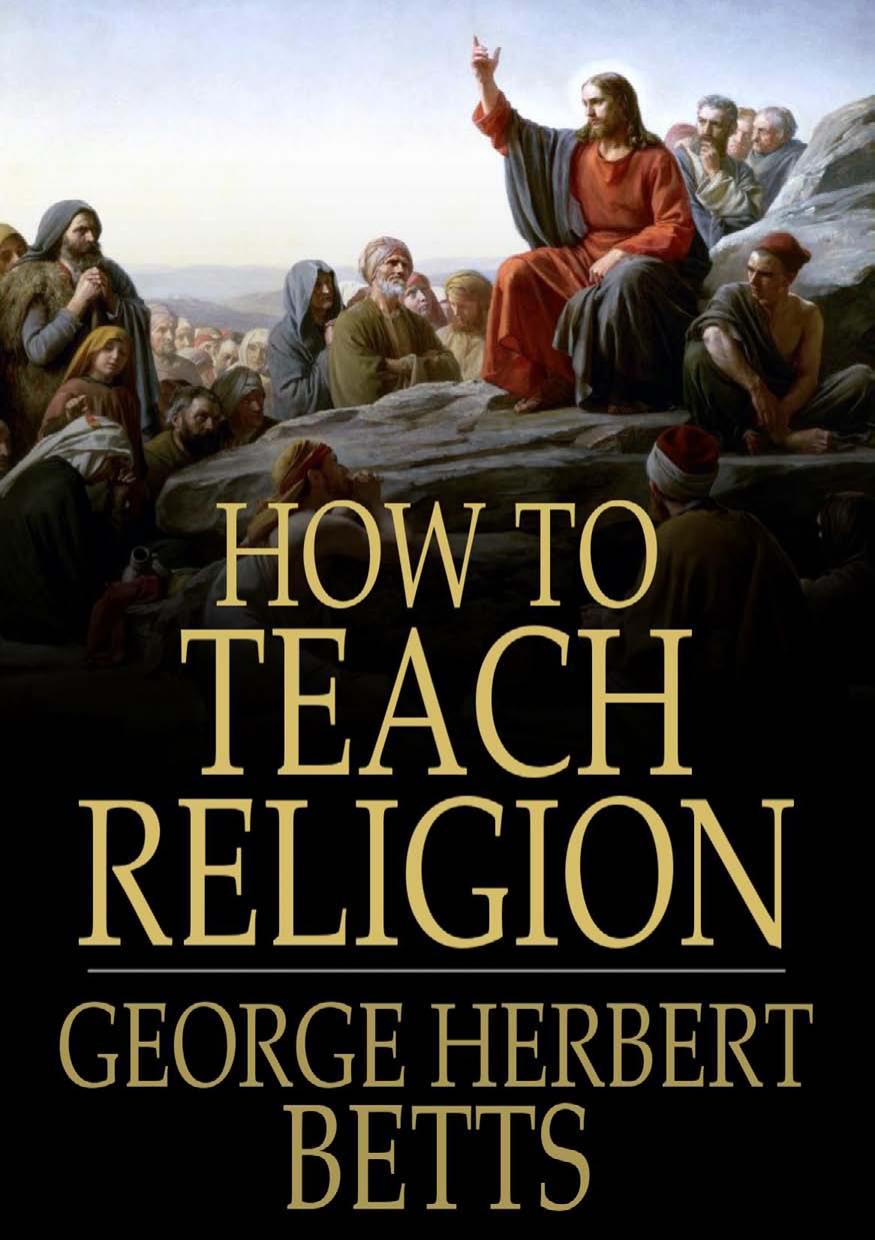How to Teach Religion by George Herbert Betts

Author:George Herbert Betts
Language: eng
Format: epub, pdf
Tags: religion, religious, teaching, christian, christianity, theology, theological
ISBN: 9781781666319
Publisher: Andrews UK Limited 2012
Published: 2012-06-14T00:00:00+00:00
CHAPTER VIII
THE ORGANIZATION OF MATERIAL
The organization of material to adapt it to the learner's mind and arrange it for the teacher's use in instruction is hardly less important than choosing the subject matter itself. By organization is meant the plan, order, or arrangement by which the different sections of material are made ready for presentation to the child. The problems of organization may apply either (1) to the curriculum as a whole, or (2) to any particular section of it used for a day's lesson.
It is possible to distinguish four different types of organization commonly used in preparing material for religious instruction:
1. The haphazard, in which there is no definite plan or order, no thread of purpose or relationship uniting the parts, no guiding principle determining the order and sequence.
2. The logical, in which the nature and relationships of the material itself determine the plan and order, the question of ease and effectiveness in learning being secondary or not considered.
3. The chronological, applicable especially to historical material, in which the events, characters, and facts are taken up in the order of the time of their appearance and their sequence in the entire situation or account.
4. The psychological, in which the first and most important question is the most natural and favorable mode of approach for the learner - how the material shall be planned and arranged to suit his power and grasp, appeal to his interest, and relate itself to his actual needs and experience.
TYPES OF ORGANIZATION
Haphazard organization. - The haphazard plan, which is really no plan at all, is, of course, wholly indefensible. No teacher has a right to go before his class with his material in so nebulous a state that it lacks coordination and purpose. It is this that results in chance and unrelated questions, irrelevant discussions, and fruitless wanderings without definite purpose over the field of the lesson, such as may sometimes be seen in church classes.
The outcome of such instruction hardly can be more than occasional, disconnected scraps of information, or fragmentary impressions which are never gathered up and bound together into completed ideals and convictions. The haphazard type of organization may result from incompetence, indifference, and failure to prepare, or from taking a ready-made and poorly prepared plan from the "lesson helps" which is not adapted to our class. Pity the child assigned to a class presided over by a teacher who esteems his privilege so lightly as not to make ready for his task by careful planning.
Logical organization. - In the logical arrangement of material, the first care is not given to planning it in the most favorable way for the one who studies and learns it, but, rather, to fit together the different parts of the subject matter in the way best suited to its logical relationships. The child is pedagogically ignored; the material receives primary consideration. The logical order of material fits the mind of the adult, the scholar, the expert, the master in his field of knowledge; it begins with the most general and abstract truths.
Download
How to Teach Religion by George Herbert Betts.pdf
This site does not store any files on its server. We only index and link to content provided by other sites. Please contact the content providers to delete copyright contents if any and email us, we'll remove relevant links or contents immediately.
The Lost Art of Listening by Michael P. Nichols(7453)
Why I Am Not A Calvinist by Dr. Peter S. Ruckman(4125)
The Rosicrucians by Christopher McIntosh(3491)
Wicca: a guide for the solitary practitioner by Scott Cunningham(3149)
Signature in the Cell: DNA and the Evidence for Intelligent Design by Stephen C. Meyer(3098)
Real Sex by Lauren F. Winner(2986)
The Holy Spirit by Billy Graham(2914)
To Light a Sacred Flame by Silver RavenWolf(2787)
The End of Faith by Sam Harris(2705)
The Gnostic Gospels by Pagels Elaine(2496)
Waking Up by Sam Harris(2421)
Nine Parts of Desire by Geraldine Brooks(2343)
Jesus by Paul Johnson(2330)
Devil, The by Almond Philip C(2304)
The God delusion by Richard Dawkins(2284)
Heavens on Earth by Michael Shermer(2256)
Kundalini by Gopi Krishna(2151)
Chosen by God by R. C. Sproul(2142)
The Nature of Consciousness by Rupert Spira(2069)
